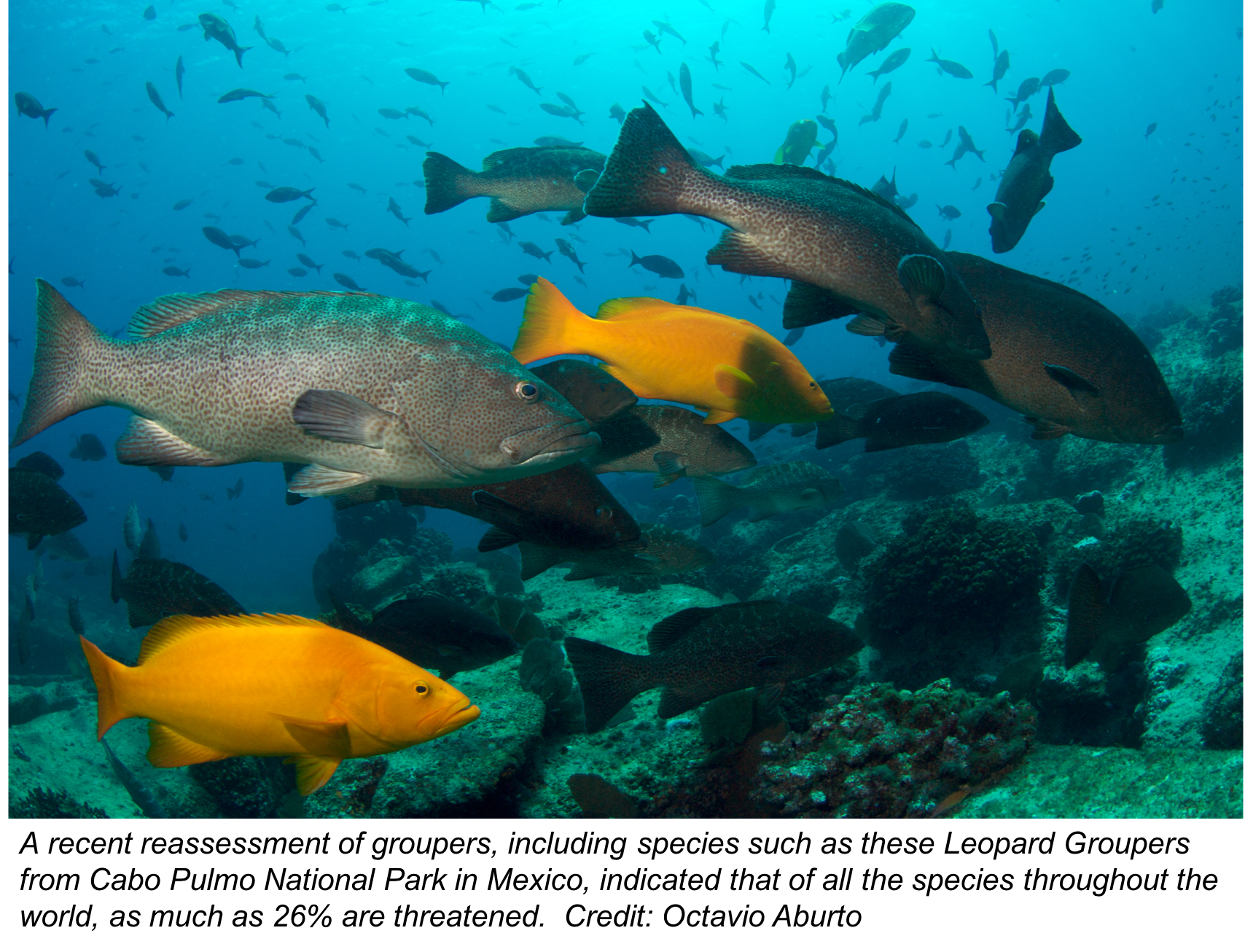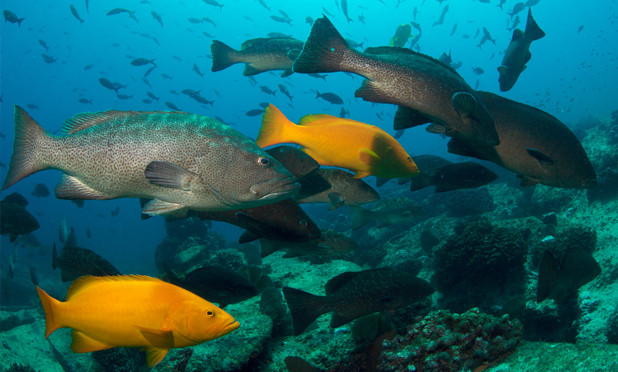Groupers are among the highest valued reef fish, and a reassessment of all the grouper species around the world demonstrated that as much as 26% are threatened. In a recent paper published in Marine Policy, authors, including fisheries professor Dr. Brad Erisman from The University of Texas Marine Science Institute, reviewed their process for reevaluating grouper and the threats they face.
 The results of the study found that nearly half of all grouper species changed in their threat status (e.g. endangered vs. least concern), which highlights the importance and value of the re-assessment process, particularly for harvested species. For the most part, species changed their status due to existence of more biological and fisheries information that permitted a more detailed and systematic assessment compared to the original one that was completed nearly a decade prior. Perhaps the most important change, however, was the marked increase in the number of species that are being harvested by recreational and commercial fisheries, including many small-bodied species that were not targeted previously. Conversely, what has changed very little are monitoring, management, trade controls or other actions to address the threats facing grouper populations. With few exceptions, species identified as threatened a decade ago are not receiving better management.
The results of the study found that nearly half of all grouper species changed in their threat status (e.g. endangered vs. least concern), which highlights the importance and value of the re-assessment process, particularly for harvested species. For the most part, species changed their status due to existence of more biological and fisheries information that permitted a more detailed and systematic assessment compared to the original one that was completed nearly a decade prior. Perhaps the most important change, however, was the marked increase in the number of species that are being harvested by recreational and commercial fisheries, including many small-bodied species that were not targeted previously. Conversely, what has changed very little are monitoring, management, trade controls or other actions to address the threats facing grouper populations. With few exceptions, species identified as threatened a decade ago are not receiving better management.
In the case of local groupers, for which species such as the Red Grouper, Warsaw Grouper, and Yellowedge Grouper are well-known representatives, revisiting their condition is particularly significant because of the growing exploitation pressure on this group of fishes. While the Western Gulf of Mexico and areas in the Indo Pacific region do not have grouper species of elevated concern, the majority of the coastlines and reef systems around the world do.
“Coastlines throughout the world have seen a decrease in abundance, species richness, and shift in size from larger to smaller fish, which is primarily caused by growing demand and increased fishing pressure,” said Erisman. The authors cite some encouraging and positive examples of species recovery that were associated with research activities, strong political wills, and enforcement. Along with the status reports, the paper describes several steps that could be taken to reduce grouper extinction risk such as monitoring trade, aquaculture practices and focused efforts on areas in which groupers are most at risk.
This reassessment updates the International Union for Conservation of Nature (IUCN), “Red List” of threatened species, which was founded in 1964 and is the world's most comprehensive inventory of the global conservation status of thousands of species of plants and animals. This is the first time any marine species group had been re-assessed by the IUCN to determine whether any changes had occurred.
This research was supported by Ocean Park Conservation Fund – Hong Kong, Mohamed bin Zayed Species Conservation Fund, The University of Hong Kong, Governo dos Açores, and the United States Voluntary funds through IUCN.









